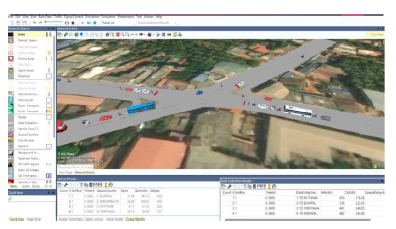Safety Assessment of Junctions - A Case Study of Koottanad Junction
DOI:
https://doi.org/10.5281/zenodo.12770677Keywords:
Road Safety, Congestion, VISSIM, DelayAbstract
Road safety is the practice of preventing congestion, accidents and minimizing the risk of injury or death to road users. There is a huge increase in vehicles and the number of accidents. Ensuring the safety of junctions has great importance, to reduce the number of accidents. Here the evaluation of the traffic is assessed by mainly focusing on mobility aspect, which is to reduce congestion. The existing conditions of Koottanad junction was assessed by conducting a questionnaire survey. It was found that the existing safety conditions were insufficient. So, based on the current scenario of Koottand junction, a base model is developed and simulated using VISSIM software. Then a signal was designed in the existing condition. But the delay was greater than the requirements. So as a further solution, the signalized design was modified by widening the road at the junction and thus providing space for free left.
Downloads

Downloads
Published
How to Cite
Issue
Section
License
Copyright (c) 2024 Chandni P K Divakaran, Amrutha, Dileep K, Gopika K Chandran, Vyshakh Menon

This work is licensed under a Creative Commons Attribution 4.0 International License.











